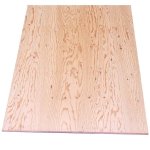From a practical POV (and from a decent HMR shooting it's favorite ammo) the average shooter can usually do better with 17HMR @ 100 yards than they can do with any 22, no matter what it is...or what it's eating. At least from my shooting experiences, and from what I've witnessed others doing. I think the more I (personally) dissected what these calibers can do, and at what distances...a zippier .17 seemed to make more sense to me, so I bought a 17 Hornet. I look at 22s as being the best short range target/-100 yard-ish small varmint guns. 17HMR decent 100 yard target/150-175 yard-ish small varmint guns. And by "small", I mean things like gophers out at those distances. I've seen 17HMRs effectiveness on bigger varmints in/around 100 yards and it wasn't overly inspiring.
I agree. My 17 hmr savage did better then my annie at 100. the 17 just got pushed around less in the wind.















































 I mean, my .17 HMR is the best shooting CZ factory rifle I own (out of 3 rifles and 4 barrels), so what do I know with such a small sample....
I mean, my .17 HMR is the best shooting CZ factory rifle I own (out of 3 rifles and 4 barrels), so what do I know with such a small sample.... 





























